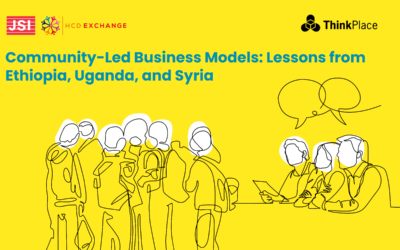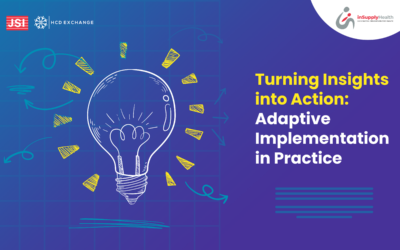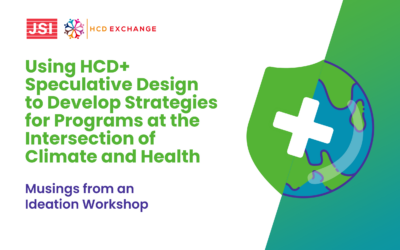“I like to describe prototyping as anything that creates a make-believe world. Something that the user is able to visualize to get the feel of a solution firsthand. When users immerse themselves in the experience, what you are getting is genuine feedback on how they are going to behave, feel or experience the solution.” – Devanshi Sihare, Head of Social Impact Practice, TinkerLabs.
Importance of prototyping
- Prototyping determines whether ideas have potential. It helps users better understand an idea, and gives us the opportunity to test its potential to solve the intended problem. Therefore, prototyping amplifies the practical side of a solution and if users will understand, enjoy using and be immersed in it.
“When creating a solution, we come up with a problem statement and have so many ideas that can solve it. We think it’s going to work based on our assumptions. But seeing if that idea is actually solving the problem that we set out to solve, is answered through prototyping.” – Devanshi Sihare
- Prototyping helps to manage uncertainty. During the design process, designers face uncertainty on the features of the idea that will work and those that are not going to work, and how long users will take to be able to understand. This helps to manage uncertainty.
- Prototyping helps to understand users’ genuine reaction and not just their intellectual feedback. Through prototypes, users are able to interact with the solution firsthand, allowing them to express their true impressions and concerns about the solution.
- Prototyping helps to explore and develop concepts through co-creation, testing and validation with your users. Stakeholders can use prototypes to prompt ideas and iterations to help improve a solution before getting to the pilot stage.
“Basically prototypes help you fail fast, but also learn faster and move forward truly fast in your journey. You get free advice from users that would be valuable in developing a solution.” – Devanshi Sihare
Methods of prototyping
There are different methods for prototyping, depending on what you are building and your objectives. Here are a few we covered:
- Sketching is a visual representation of your ideas.
- Storyboarding helps you to define what the user journey is going to be like.
“What helps during storyboarding is specifically when you have solutions that require a lot of touch points or a longer journey. This can be interactions with different kinds of devices or tools or stakeholders, which you can be brought together into a storyboard.” Devanshi Sihare
- ‘Works-like feels-like’ model, is a physical interpretation of an idea. For example creating a model of the solution.
- UX/UI flows and visualization are used for solutions that involve digital screens and interactions. This approach visualizes user experience or user interface designs for the digital world. Examples include;
- User flow diagrams tell how the user is going to go from one screen to another.
- Paper prototyping tests how you’re imagining your app, web-pages or screens to look like. In paper prototyping, you can sketch each and every feature.
- Wireframing is usually done after you’ve done the user experience (UX), when you’re figuring out what screens connect to and how each of the screens look.
- Role-play/bodystorm is where program designers immerse themselves in the context of the challenge or problem. Here is a great example.
- Service blueprint comes in handy when designing a service for example a health care service. The service blueprint is a basic flowchart and customer journey map that starts with the customer at the center, and envisions what the user journey is going to look like.
Here is a guide for prototyping methods and their use cases.
How do we develop prototypes?
Once you have the ideas for a solution at hand, how do you develop a prototype to bring the idea to life? Here are 6 helpful steps to follow;
- Sketch the concept: This can be through doodles, mind maps or diagrams, to give your idea some shape
- Set the intention of prototyping: This will help you to understand the purpose or objective of prototyping
- Figure out what to prototype: What are the key features or components that you are unsure of?
- Choose a prototyping method: The method you choose will depend on your prototype use case For example, for 3D products you could use role-play or works-like-feels-like models, and with a communication product, you could use sketching or story-boarding.
- Assign roles within the team: define who will be the strategizer, the project manager and the creative thinker.
- Build the prototype!
Prototyping in AYSRH
Watch this live prototyping session on developing prototypes for AYSRH solutions.



